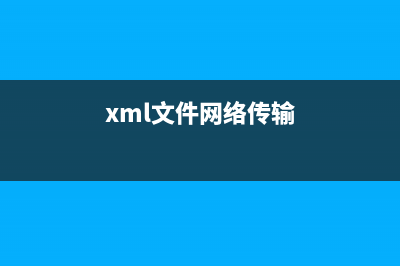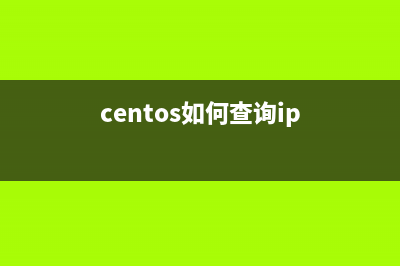位置: 编程技术 - 正文
LayoutInflater.inflate方法解析
编辑:rootadmin推荐整理分享LayoutInflater.inflate方法解析,希望有所帮助,仅作参考,欢迎阅读内容。
文章相关热门搜索词:,内容如对您有帮助,希望把文章链接给更多的朋友!
LayoutInflater.inflate方法应该是Android程序员最常使用的方法之一了,但是如果使用不当,你会碰见很多的坑。。。今天我就碰到了一个,我找到了解决方法,也打算把它记下来。。。
事情是这样的,我有一个LineaLayout,然后在代码中会inflate若干个View添加到这个LineaLayout中,但是坑出现了。。。
0x 一个栗子需要添加到LinearLayout中的View布局文件类&#;如下():
这个View的宽固定为dp,高和父容器一样,然后就是inflate这个View并且添加到这个LinearLayout中(我故意将这个布局文件的background设置一个颜色,这样可以很清晰的看出这个View占的位置)
这样写的话,你就会发现布局文件R.layout.layout_menu_item中的android:layout_width="dp"不起作用!!也就是说View.inflate方法忽略了布局文件的宽度设置
可是你又可以发现View.inflate方法中还有第三个参数ViewGroup root,Android文档中是这么写的:
A view group will be the parent. Used to properly inflate the layout_* parameters
那么可以猜想肯定和这个参数有关,下面改写代码:
你就会发现这样写会崩溃!然后下面这样写就没问题了:
View.inflate方法自动将生成的View添加到了这个ViewGroup root中去了!!
你可以inflate多个View,就可以看到下面这样样子了:
0x inflate详解其实View.inflate方法是调用了LayoutInflater.from(context).inflate(resource, root, root != null)方法,而inflate方法的三个参数如下:
resource: 布局文件的id,比如R.layout.layout_menu_itemroot:这是一个可选参数,resource布局文件中layout_*参数设置的参照物就是这个root,也就是说inflate方法会根据这个root的大小,将resource布局文件中layout_*参数转换成一个LayoutParam对象attachToRoot:是否将这个生成的View添加到这个root中去inflate方法会返回resource布局文件产生的View

上面栗子中调用了View.inflate(Context context, int resource, ViewGroup root),这个方法本质上是调用了了LayoutInflater.from(context).inflate(resource, root, root != null),在这个inflate方法中可以找到下面代码:
可见inflate方法自动将这个生成的View添加到了这个root中去了
0x 实验因为可以调用inflate方法的途径有很多,下面就来做实验总结一下:
实验0布局文件R.layout.layout_menu_item 中android:layout_height="match_parent" 改为android:layout_height="dp"
实验1布局文件R.layout.layout_menu_item 中android:layout_height="match_parent" 改为android:layout_height="dp"
实验2布局文件R.layout.layout_menu_item 中android:layout_height&#;改为match_parent
实验3布局文件R.layout.layout_menu_item 中android:layout_height&#;改为match_parent
0x 源码分析实验3的原因在inflate详解中已经介绍过了。
总之原因就在上面代码-行,布局文件R.layout.layout_menu_item生成的View会因为attachToRoot参数为true,就将这个生成的View添加到root中去,然后inflate方法会返回这个root的View
看上面代码-行,如果root不为null的话,就会为这个布局文件R.layout.layout_menu_item生成一个LayoutParam对象,如果attachToRoot参数为false,那么就将这个param对象给这个布局文件的View(看行)。如果attachToRoot参数为true,那么就在上面代码第行,将这个布局文件的View和param参数添加到root中。
0x 总结调用LayoutInflater.inflate方法,并且将root参数设置为null,就等于忽略了xml布局文件中的layout_×参数
如果root不为null,并且attachRoot=true,那么就会根据root生成一个布局文件View的LayoutParam对象,并且将这个View添加到root中去,并且返回这个root的View
因此,最好还是使用这个代码吧:View v1 = LayoutInflater.from(this).inflate(R.layout.layout_menu_item, layout, false);
参考Making sense of LayoutInflater
Layout Inflation as Intended
xml输入是如传递给java的 spanstyle=font-size:px;font-family:Arial,Helvetica,sans-serif;background-color:rgb(,,);/spanspanstyle=font-size:px;font-family:Arial,Helvetica,sans-serif;background-color:rgb(,,)
Android提高十七篇之多级树形菜单的实现 在Android里要实现树形菜单,都是用ExpandableList(也有高手自己继承ListView或者LinearLayout来做),但是ExpandableList一般只能实现2级树形菜单......本文也依然使
根据两点的经纬度求方位角和距离,等 原文地址:根据两点的经纬度求方位角和距离,等作者:多乎哉不多也多亦不多乎实乃少也最近自己做的一个小东西要用到经纬度方面的计算,查遍中
标签: LayoutInflater.inflate方法解析
本文链接地址:https://www.jiuchutong.com/biancheng/370935.html 转载请保留说明!


